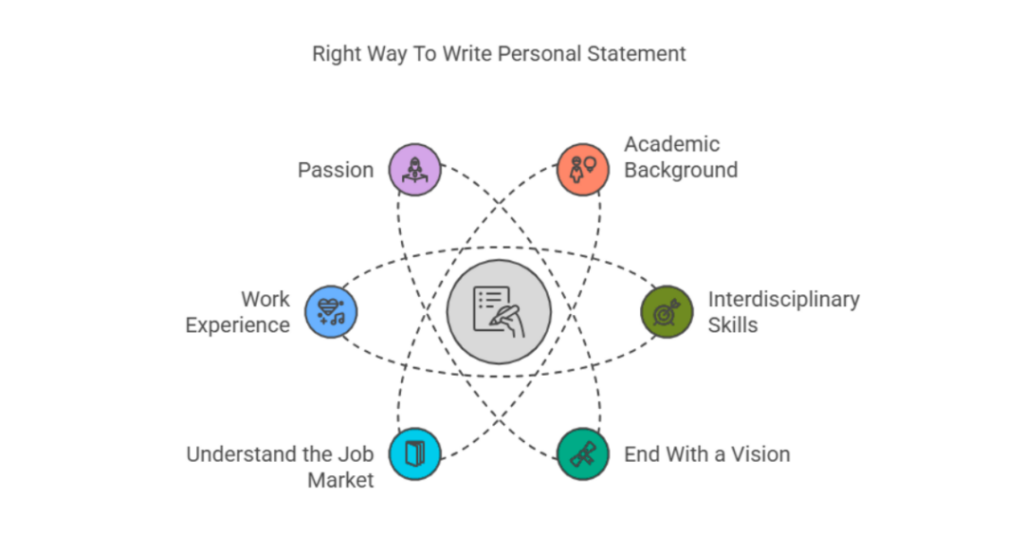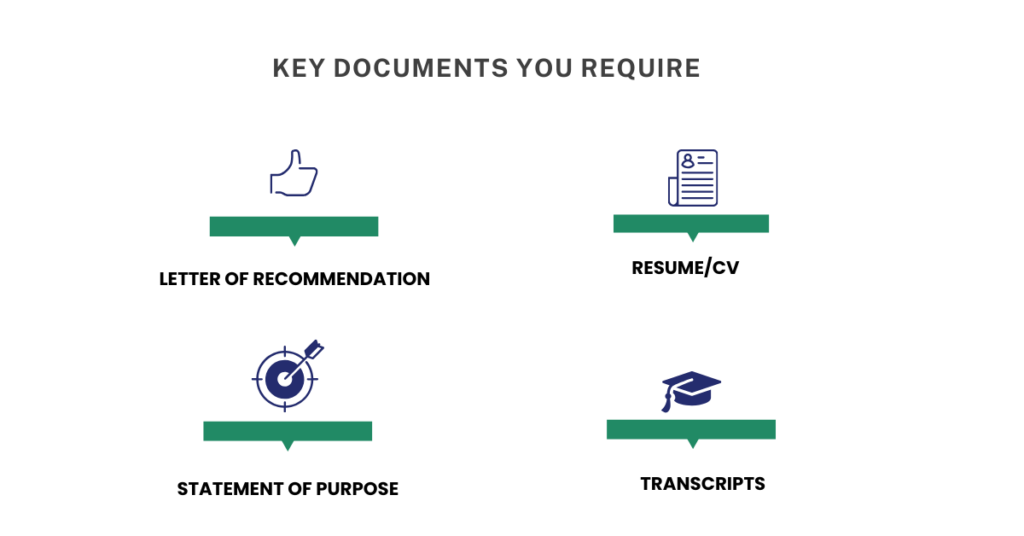14 May 2025
6 minutes read
How To Write A Mechatronics Engineering Personal Statement: Tips + Example

Key Takeaways
- A strong mechatronics engineering personal statement shows your ability to solve real-world problems using mechanical, electrical, and software skills.
- Highlight your hands-on experience with projects in robotics, automation, or interdisciplinary work to stand out.
- Research industry trends and connect your goals with the future needs of engineering fields like aerospace and sustainable technology.
How do you stand out in a sea of applicants who also think they’re the next Steve Jobs or Elon Musk? The truth is, most personal statements are bland and forgettable, often lost in the shuffle of generic stories. So, what sets yours apart? Start by being brutally honest—highlight your unique journey, your passion for blending mechanical, computer, and electrical engineering, and most importantly, your ability to solve real-world problems. It’s not about flashy words; it’s about showing what you can do with your skills in mathematics and engineering.
6 Steps To Write A Great Personal Statement For Mechatronics Engineering
Think a mechatronics engineering personal statement is just about throwing in some boring “I’ve always loved building robots” line?
The reality is, if you’re not showing real, measurable expertise in areas like robotics, automation, and interdisciplinary work, you’re basically wasting your time. Admissions committees are flooded with statements of purpose (SOPs) that all sound the same, so if you want your application to stand out, you need to think bigger. This isn’t just about your qualification; it’s about showing how you’ll innovate and contribute to the future of fields like aerospace engineering, electronics engineering, and sustainable engineering.

Here’s how to nail it:
1. Show Your Passion for Problem-Solving
When you’re writing a mechatronic engineering personal statement, don’t just tell them you’re passionate about robotics—prove it. How have you applied problem-solving skills in real life? Maybe you’ve worked on a senior design project or an automotive prototype. Talk about it. Show how you identified problems and created innovative solutions using automation or control systems. This isn’t just fluff; it’s a way to show you’re ready for the challenges of a technical lab, aerospace, or even civil engineering.
2. Make Your Academic Background Work for You
You might have a killer education in mechatronics engineering or a background in mathematics and physics, but how does that translate to the real world? Don’t just list your courses—highlight specific skills you’ve gained, like technical drawing or your knowledge in machine learning. Be sure to mention related personal statements or research papers you’ve written. Show how this knowledge forms a strong foundation for your future career in mechatronic engineering.
3. Highlight Relevant Work Experience
Not all of your experience has to come from a traditional job. Did you work on a team project designing a prototype for an electromechanical system? Maybe you’ve contributed to automation systems or performed hands-on work in a technical lab. Admissions officers want to know what you’ve done, not just what you think you can do. Make sure to tie your work experience back to your aspirations in mechatronic or aerospace engineering.
4. Demonstrate Your Commitment to Interdisciplinary Skills
Mechatronics isn’t just about mechanics or electronics—it’s about blending both. If you’ve worked with interdisciplinary teams or participated in projects that spanned multiple engineering disciplines (like mechanical systems and control systems), make that clear. Highlight how this hands-on experience prepared you for pursuing a career that requires both creativity and technical skill. This could even mean working on projects related to sustainable engineering or creating innovative solutions for industries like automotive or aerospace.
5. Show You Understand the Job Market and Industry Needs
No one wants to read a personal essay that sounds like you’re living in a bubble. Do some research on the job market and show how your qualifications align with the future of the industry. Talk about the growing importance of automation, robotics, or sustainable engineering in shaping the future of engineering. Employers are looking for aspiring engineers who can adapt to changing technologies like machine learning and automation. Prove you’re already ahead of the curve.
6. End With a Vision—But Keep It Real
When you wrap up your personal statement, avoid vague platitudes. It’s tempting to say something like, “I want to shape the future,” but it’s far more impactful to give concrete examples. Where do you see yourself applying your education in mechatronics engineering? Whether it’s in aerospace engineering, working on electromechanical systems, or creating innovative automation solutions, show them you’re not just looking for a scholarship or a degree—you’re actively planning your career path with specific goals.
What Are The Other Requirements To Pursue Mechatronics Engineering?
Personal statement isn’t the only weapon you need to conquer the battle for a spot in mechatronics engineering. While your personal statement may catch their eye, you also need the right documentation and scores to back up your application. Whether you’re applying to a top-tier university or a specialized program, there are several other key requirements you’ll need to have in place.

Here’s a breakdown of the essential documents and exams needed when pursuing a career in mechatronics engineering:
| Requirement | Details |
|---|---|
| Personal Statement | Your statement of purpose should highlight your passion for becoming an engineer and detail your journey toward pursuing mechatronics. Don’t forget to include your interest in math and engineering fundamentals. |
| Scholarship Essay | If you’re applying for financial aid, a compelling scholarship personal statement can make all the difference. Make sure it ties back to your goals in mechatronics engineering and shows why you deserve funding. |
| Foundation Program | Many students from non-engineering backgrounds may need a foundation program to bridge gaps in math, physics, and engineering basics before diving into mechatronics engineering courses. |
| GRE/GMAT | Some universities may require GRE scores, especially if you’re applying to graduate programs. It’s an exam that tests your math, problem-solving, and analytical skills. |
| GPA | A strong GPA—particularly in math and science—will showcase your academic readiness for a rigorous mechatronics engineering program. |
| TOEFL/IELTS | If English isn’t your first language, you’ll need TOEFL or IELTS scores to prove you can handle academic coursework in English. |
Mechatronics And Mechanical Engineering Personal Statement Example
Now is the time for the thing you came to this blog for—a mechatronics and mechanical engineering personal statement example. Reading a sample can give you that much-needed spark, showing you the balance between technical skills and personal storytelling. It’s the perfect way to get a feel for how to highlight your passion for engineering while still making your statement relatable and memorable.
Let’s check an example that strikes the right balance between professional and personal.
Mechatronics and Mechanical Engineering Personal Statement Example
From a young age, I’ve been captivated by the way things work, whether it was tearing apart old electronics or building simple machines from scratch. My fascination with mechanical systems and robotics led me to pursue a path in mechatronics engineering, where the integration of mechanical, electrical, and software systems allows for innovative problem-solving. Throughout my high school years, I found myself diving deep into mathematics and physics, the foundation of understanding how things move and interact.
In my senior year, I joined a robotics club where I had the opportunity to design and build a robot for an inter-school competition. The experience was a turning point, showing me how theory could be transformed into practical solutions. Working as part of a team, I realized the importance of collaboration and problem-solving—skills I know are crucial for any aspiring engineer.
During my internship at an automotive company, I was exposed to the real-world applications of mechanical systems, control systems, and automation. I worked on several projects involving the design and testing of electromechanical systems, which strengthened my desire to further explore mechatronics engineering. This experience made it clear to me that I want to pursue a career where I can contribute to advancing technology, particularly in fields like robotics and sustainable engineering.
Now, I am ready to take the next step in my education, where I can continue to develop my technical skills while also learning how to innovate and shape the future of engineering. Through a degree in mechatronics engineering, I hope to contribute solutions that will not only address current challenges but also push the boundaries of what we can achieve in the worlds of automation and robotics.
Conclusion
In the end, crafting a mechatronics engineering personal statement is about more than just ticking off boxes. It’s about showcasing who you truly are as a problem-solver, innovator, and aspiring engineer. Admissions committees aren’t looking for perfect resumes; they’re looking for individuals who have the potential to contribute meaningfully to the ever-evolving world of engineering. By being authentic, reflecting on your experiences, and linking them to your passion for mechatronics, you’ll set yourself up for success.
Ultimately, your personal statement should be a clear reflection of where you’ve been, where you’re going, and the impact you want to make.
Most applicants struggle to write a perfect personal statement but end up sounding arrogant — but you won’t. At Ambitio, our AI-powered study abroad experts help you craft a powerful, standout statement that gets noticed. No fluff, no clichés—just a compelling story that proves you belong. Schedule a call with Ambitio’s experts.
FAQs
What is mechatronics engineering and what does a master’s in this field cover?
Mechatronics engineering is a multidisciplinary field combining mechanical, electrical, computer, and control engineering. A master’s program typically includes advanced topics in robotics, automation, control systems, embedded systems, and artificial intelligence
What are the typical admission requirements for a master’s in mechatronics abroad?
You generally need a relevant bachelor’s degree (such as in mechanical, electrical, or computer engineering), proof of English proficiency (IELTS, TOEFL, or PTE), and sometimes GRE/GMAT scores. A strong academic record and relevant coursework are essential
How long does it take to complete a master’s in mechatronics engineering abroad?
Most master’s programs take 1 to 2 years of full-time study, depending on the country and university
Which countries are popular for studying mechatronics engineering at the master’s level?
Top destinations include the USA, UK, Germany, Canada, Australia, Switzerland, the Netherlands, Italy, and Sweden. These countries offer renowned programs and state-of-the-art facilities
What is the typical curriculum structure for a mechatronics master’s program?
The curriculum usually includes core modules like engineering mathematics, robotics, control systems, automation, embedded systems, and often a research project or thesis
Are internships or practical training required during the master’s program?
Many programs emphasize hands-on laboratory work and may require internships or industry projects, though requirements vary by university

You can study at top universities worldwide!
Get expert tips and tricks to get into top universities with a free expert session.
Book Your Free 30-Minute Session Now! Book a call now




























